How to Plant Kohlrabi Seeds: Step-by-Step Guide for a Successful Harvest
- February 26, 2024
- 0 comment
Kohlrabi, a unique and nutritious vegetable, is an excellent addition to any garden. Known for its bulbous stem and crisp texture, it’s a versatile ingredient in many culinary dishes. Planting kohlrabi from seeds is a straightforward process, suitable for gardeners of all levels. This guide will walk you through the steps to successfully plant and grow kohlrabi in your garden.
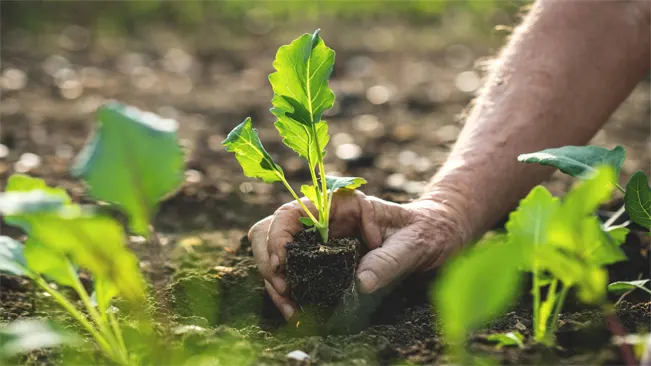
Nutritional Benefits of Kohlrabi
| Benefit Category | Description |
|---|---|
| Nutritional Value | Kohlrabi is low in calories but high in fiber, making it excellent for digestion and weight management. |
| Rich in Vitamins and Minerals | It’s a great source of vitamin C, which boosts the immune system, and contains vitamins B6, potassium, and magnesium. |
| Antioxidant Properties | Contains antioxidants like isothiocyanates and sulforaphane, which may help protect against certain types of cancer. |
| Supports Heart Health | The fiber, potassium, and other compounds in kohlrabi can aid in maintaining healthy blood pressure and cholesterol levels, benefiting heart health. |
| Bone Strength | It provides a good amount of calcium and vitamin K, essential for bone health and preventing osteoporosis. |
| Anti-Inflammatory Effects | Kohlrabi contains compounds that may have anti-inflammatory properties, potentially beneficial for reducing the risk of chronic diseases. |
| Improves Metabolism | The vitamin B6 in kohlrabi plays a role in energy metabolism and neurotransmitter synthesis. |
| Skin Health | The high levels of vitamin C contribute to healthy skin by promoting collagen production and protecting against skin damage. |
| Eye Health | Kohlrabi contains carotenoids such as beta-carotene, which are important for maintaining good eye health and may reduce the risk of age-related eye disorders. |
| Versatility in Diet | Kohlrabi can be eaten raw or cooked, making it a versatile vegetable that can be incorporated into various dishes. |
Choosing the Right Time
The timing of planting is crucial. For spring harvest, plant kohlrabi seeds 4-6 weeks before the last frost date. For a fall harvest, plant in late summer, 6-8 weeks before the first frost date. This timing helps avoid the hot summer months, which can hinder growth.
- Understanding Frost Dates
- Last Frost Date (Spring Planting): This is the estimated date of the last spring frost in your area. Planting kohlrabi seeds 4-6 weeks before this date allows the seeds to germinate and grow in cooler temperatures, which is ideal for kohlrabi.
- First Frost Date (Fall Planting): This date marks the beginning of frost in autumn. Planting kohlrabi 6-8 weeks before this date ensures that the plant has enough time to mature in the cooler temperatures of late summer and early fall, before the first frost.
- Why Timing Matters
- Avoiding Heat Stress: Kohlrabi does not fare well in high heat. The cooler temperatures of spring and fall are perfect for growing kohlrabi, as the plant can struggle and bolt (go to seed prematurely) in hot summer temperatures.
- Optimal Growth Conditions: Cool weather enhances the growth and flavor of kohlrabi. The plant prefers temperatures between 40-75°F (4-24°C), and planting within the recommended windows aligns the growth period with these temperatures.
- Regional Considerations
- Variation Across Regions: Frost dates vary significantly depending on geographical location. It’s important to consult a local gardening calendar or agricultural extension office for the most accurate frost dates in your area.
- Microclimates: Within the same region, microclimates can affect local growing conditions. Be mindful of your specific garden’s exposure to elements like sun, wind, and frost pockets.
Selecting a Planting Site
Choose a site with full sun and well-draining soil. Kohlrabi thrives in soil with a pH between 6.0 and 7.5. Prepare the bed by incorporating organic matter or compost to enrich the soil.
Selecting a Planting Site for Kohlrabi
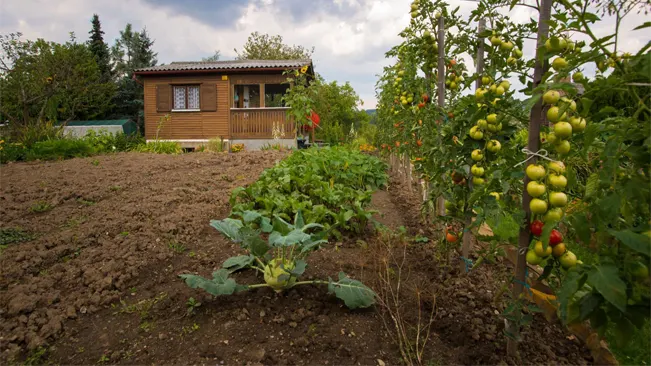
- Sunlight Requirements:
- Full Sun: Kohlrabi plants require a location that receives full sun. This means the site should have direct sunlight for at least 6 to 8 hours per day. Full sun exposure is crucial for kohlrabi as it aids in the development of the bulb and ensures a robust, healthy plant.
- Soil Quality:
- Well-Draining Soil: The chosen site must have well-draining soil. Kohlrabi does not tolerate waterlogged conditions, which can lead to root rot and other diseases. If you have heavy clay soil, consider amending it with organic material.
- Soil pH: The ideal soil pH for kohlrabi is slightly acidic to neutral, ranging from 6.0 to 7.5. You can test your soil’s pH with a home testing kit available at garden centers. If the pH is outside this range, you can adjust it by adding lime (to increase pH) or sulfur (to decrease pH).
- Soil Preparation:
- Incorporate Organic Matter: Before planting, it’s important to prepare the bed by incorporating organic matter or compost. This step improves soil structure, provides essential nutrients, and enhances the soil’s water-retention capacity. Well-composted organic matter also encourages beneficial microbial activity in the soil.
- Loosen the Soil: Till or turn the soil to a depth of about 8-12 inches. Loosening the soil allows the kohlrabi’s roots to penetrate and expand more easily, which is important for the development of the edible bulb.
- Site Selection Tips:
- Rotation: Avoid planting kohlrabi in a spot where other Brassica family members (like cabbage, broccoli, or cauliflower) have grown recently. This practice reduces the risk of soil-borne diseases and pests that can accumulate in the soil.
- Accessibility: Choose a site that is easily accessible for regular maintenance, such as watering, weeding, and harvesting.
- Wind Protection: If your area is prone to strong winds, consider a site that offers some protection, as kohlrabi can be vulnerable to wind damage.
Planting the Seeds
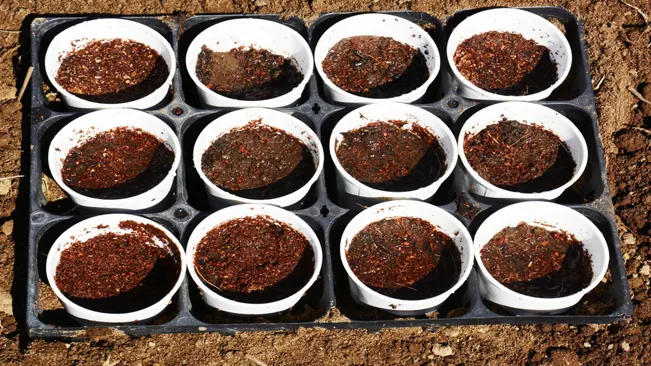
- Sowing Depth
- When you sow kohlrabi seeds at a depth of ¼ to ½ inch, it ensures optimal conditions for germination. This depth is shallow enough for the seeds to receive adequate warmth and light, yet deep enough to maintain moisture. The soil covering the seeds should be lightly packed to allow for easy emergence of the seedlings.
- Spacing the Seeds
- Spacing the seeds about 1 inch apart is important for a couple of reasons. Firstly, it prevents overcrowding at the seedling stage, ensuring each plant has enough space to access nutrients and moisture. Secondly, it minimizes competition between the plants, promoting healthier growth. As kohlrabi plants develop, they will need more space, which is why thinning (removing some seedlings) is often necessary as they grow.
- Row Spacing
- Keeping rows 12-18 inches apart allows for adequate air circulation around the plants. This spacing is not only beneficial for the growth of kohlrabi but also helps in reducing the risk of disease spread, as pathogens are less likely to transfer between plants when there’s sufficient space. Additionally, this spacing makes it easier for you to navigate between rows for weeding, watering, and harvesting.
- Watering After Sowing
- Watering the soil gently but thoroughly after sowing is crucial. The goal is to moisten the soil without dislodging or burying the seeds too deeply. A light sprinkle or a gentle spray of water works well. Consistent moisture in the soil is key to successful germination, so the soil should be kept evenly moist (but not waterlogged) during this period.
- Emergence of Seedlings
- Seedlings typically emerge in 5-10 days, depending on the soil temperature and conditions. Cooler soil temperatures might slow down germination. Once the seedlings emerge, they should be monitored and cared for, ensuring they receive adequate sunlight, water, and nutrients. If any seedlings appear overcrowded, thin them out to allow the remaining plants to develop fully.
Care and Maintenance
Thinning Seedlings
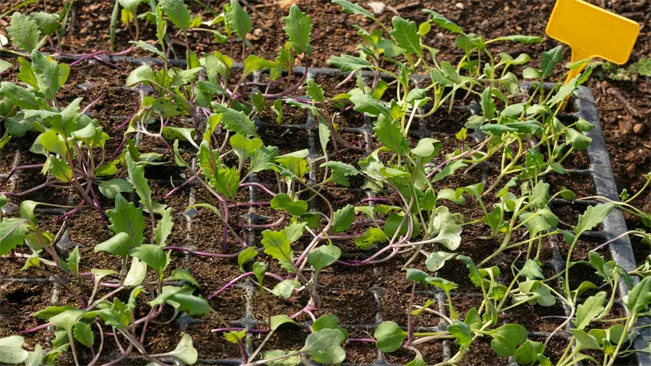
- Purpose: Thinning is vital for preventing overcrowding, which can lead to underdeveloped plants. It ensures each kohlrabi plant has enough space, sunlight, and nutrients to grow effectively.
- Method: Once the seedlings are a few inches tall, carefully remove the smaller or weaker seedlings. Leave the strongest ones, ensuring they are spaced about 5-6 inches apart. This can be done by gently pulling out the excess seedlings or cutting them at soil level with scissors.
Watering
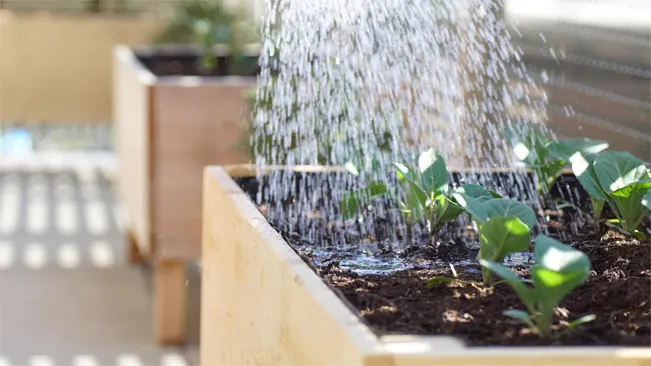
- Consistency: Kohlrabi plants require consistent moisture for optimal growth. Inconsistent watering can lead to poor root development and might affect the taste and texture of the bulbs.
- Avoiding Waterlog: While the soil should be kept moist, it’s crucial to avoid waterlogging, as this can lead to root rot and other fungal diseases. Ensure good drainage in the soil.
- Watering Technique: Use a gentle spray to water, avoiding high pressure that can disturb the soil or damage young plants. Watering in the morning is ideal, as it allows moisture on the leaves to dry during the day, reducing disease risk.
Mulching

- Purpose: Mulching helps retain soil moisture, regulates soil temperature, and suppresses weed growth. It also can prevent soil-borne diseases from splashing onto the plants.
- Materials: Organic mulches such as straw, grass clippings, or shredded bark are suitable. Apply a 2-3 inch layer around the base of the plants, being careful not to pile it against the stems.
Fertilizing
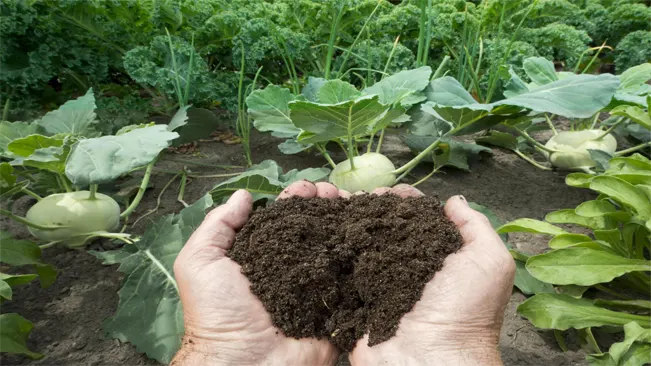
- Timing: Apply a balanced, all-purpose fertilizer a few weeks after planting, once the plants are established and growing. This is typically when they have a few sets of true leaves.
- Type of Fertilizer: Use a balanced fertilizer (like a 10-10-10 NPK ratio) that provides equal parts nitrogen, phosphorus, and potassium.
- Application Method: Follow the manufacturer’s instructions for application rates and methods. Generally, granular fertilizers can be sprinkled around the base of the plants and gently mixed into the soil, followed by watering.
Monitoring for Pests and Diseases
Kohlrabi can be susceptible to pests like aphids and cabbage worms. Regularly check plants and manage pests using organic methods like neem oil or insecticidal soap. Diseases like clubroot can be avoided by maintaining the correct soil pH and practicing crop rotation.
Identifying and Managing Pests
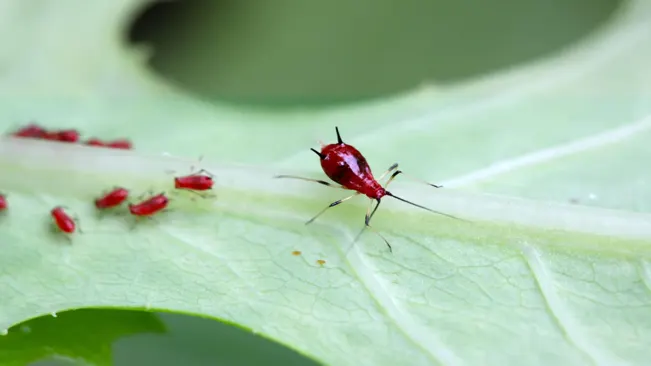
- Aphids: These small, sap-sucking insects can be green, yellow, black, or brown. They often cluster on the undersides of leaves and can cause stunted growth, yellowing leaves, and distorted stems. To manage aphids, you can:
- Use Organic Sprays: Neem oil or insecticidal soap sprays are effective against aphids. These should be applied as per instructions, typically every 7-10 days until the infestation is under control.
- Encourage Natural Predators: Ladybugs, lacewings, and hoverflies are natural predators of aphids. Attracting these beneficial insects can help control the aphid population.
- Cabbage Worms: These caterpillars are the larvae of white butterflies. They chew large holes in the leaves. To manage cabbage worms:
- Manual Removal: Regularly inspect the plants and manually remove any worms or eggs.
- Bacillus thuringiensis (Bt): This is a naturally occurring bacterial toxin that can be used as an organic pesticide. It’s effective against caterpillars when applied to foliage.
Identifying and Preventing Diseases
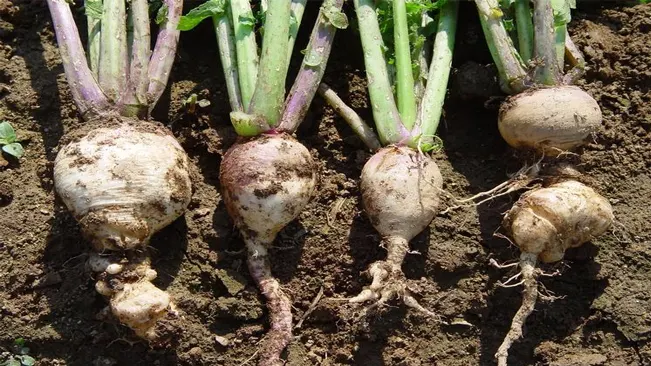
- Clubroot: A fungal disease that causes swelling and distortion of the roots, leading to stunted growth and wilt. To manage clubroot:
- Maintain Correct Soil pH: Clubroot thrives in acidic soils. Keeping soil pH around 7.0 can help prevent this disease.
- Crop Rotation: Avoid planting Brassicas in the same area year after year. Crop rotation helps reduce the buildup of disease in the soil.
- Good Hygiene: Sanitize garden tools and avoid moving soil from an infected area to a clean one.
Harvesting Kohlrabi
Size as an Indicator
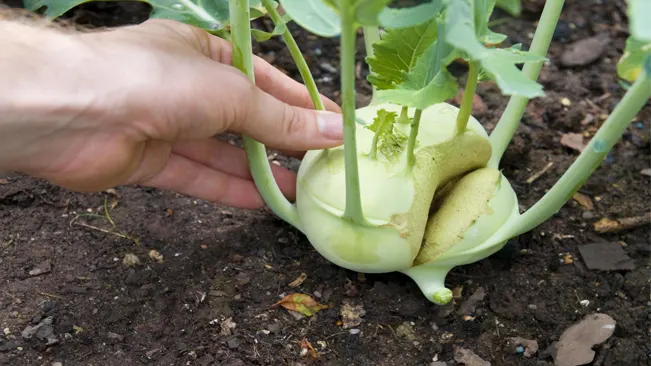
- The prime time to harvest kohlrabi is when its bulbous stem, also known as the “bulb,” reaches a diameter of about 2-3 inches. This size usually indicates that the kohlrabi is mature enough to have developed its full flavor, yet still young enough to be tender.
- Larger bulbs, especially those exceeding 3 inches, tend to become tough and fibrous. The texture might also turn woody, which is less desirable for culinary uses.
Time Frame

- Generally, kohlrabi takes around 45-60 days from seeding to reach harvest size, depending on the variety and growing conditions.
- Keeping track of when you planted the seeds can help anticipate when the crop is likely to be ready.
Harvesting Technique
The Right Way to Harvest
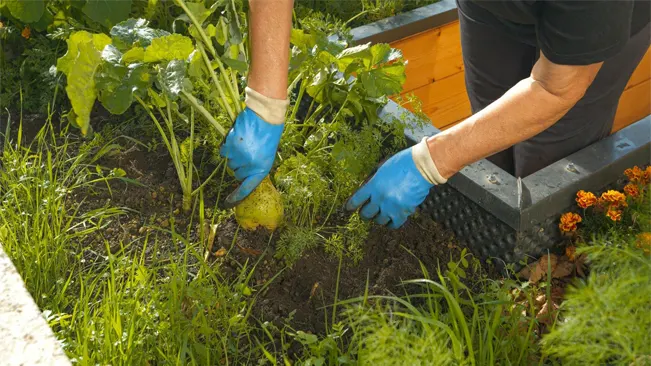
- Use a sharp knife or garden shears to cut the kohlrabi stem at the base of the bulb. Be careful not to damage the bulb in the process.
- If the soil is loose, you can sometimes twist and pull the kohlrabi out by hand, but cutting is generally more reliable and less likely to cause damage.
Handling the Leaves
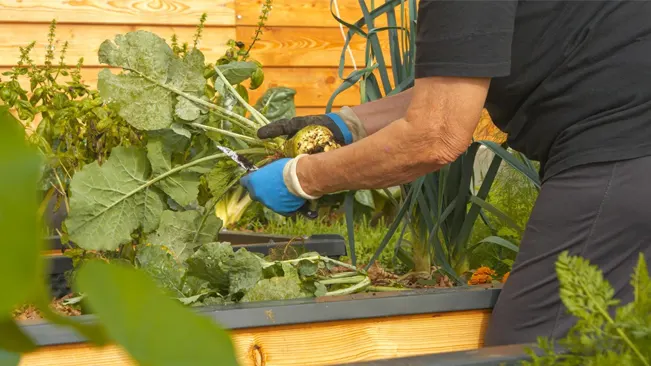
- Kohlrabi leaves are also edible and can be harvested. Young leaves are tender and can be used in salads, while larger leaves might be better cooked.
- When harvesting the bulb, you can choose to cut off the leaves close to the bulb or leave a few inches of stem with leaves for aesthetic purposes, especially if you’re displaying them at a market.
Post-Harvest Tips
Storing Kohlrabi
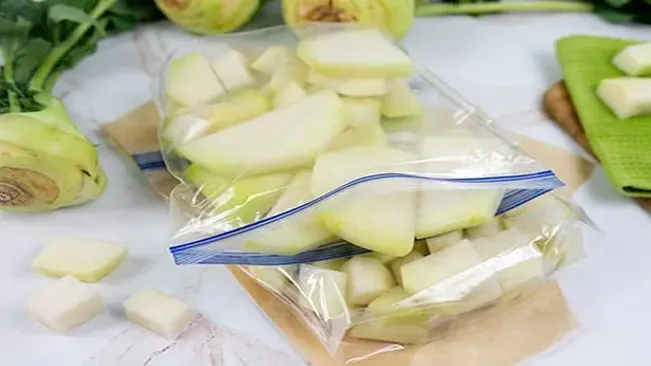
- After harvesting, kohlrabi can be stored in the refrigerator where it can last for several weeks.
- If you have harvested the leaves, they should be used within a few days as they don’t store as well as the bulbs.
Usage in Cooking
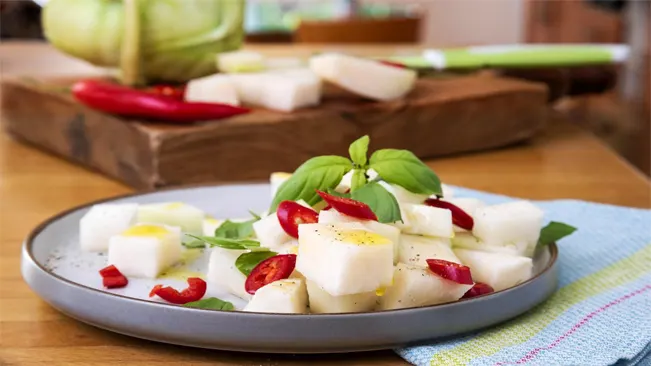
- Kohlrabi can be eaten raw, like an apple, or used in salads for a crisp, slightly sweet flavor.
- It can also be cooked – steamed, boiled, roasted, or added to soups and stews. Its taste and texture are somewhat similar to broccoli stems or cabbage hearts.
Conclusion
Planting kohlrabi seeds is a rewarding endeavor that adds variety and nutrition to your garden and diet. By following these simple steps, you can enjoy fresh, homegrown kohlrabi and the satisfaction of cultivating your own vegetables.
FAQs (Frequently Asked Questions)
- What is the best time to plant kohlrabi seeds?
Plant kohlrabi seeds 4-6 weeks before the last frost date for a spring harvest, or 6-8 weeks before the first frost date for a fall harvest. - How deep should kohlrabi seeds be planted?
Sow kohlrabi seeds about ¼ to ½ inch deep in the soil. - What type of soil is ideal for kohlrabi?
Kohlrabi prefers well-draining soil with a pH between 6.0 and 7.5. Enriching the soil with organic matter or compost is beneficial. - How much sunlight does kohlrabi need?
Kohlrabi needs full sun, which means at least 6 hours of direct sunlight daily. - How far apart should kohlrabi seeds be spaced?
Space the seeds about 1 inch apart in rows, and keep rows 12-18 inches apart. - When should I thin kohlrabi seedlings?
Thin kohlrabi seedlings when they are a few inches tall, spacing them 5-6 inches apart. - How often should I water kohlrabi plants?
Water kohlrabi plants regularly to keep the soil consistently moist, but be careful not to overwater and cause waterlogging. - Does kohlrabi need fertilizer?
Yes, fertilize kohlrabi with a balanced, all-purpose fertilizer a few weeks after planting. - How do I protect kohlrabi from pests and diseases?
Regularly inspect for pests like aphids and cabbage worms, and use organic methods like neem oil for control. Prevent diseases like clubroot by maintaining proper soil pH and practicing crop rotation. - How do I know when kohlrabi is ready to harvest?
Harvest kohlrabi when the bulbous stem reaches 2-3 inches in diameter. The texture is best when it’s young and tender.

Kristine Moore
Forestry AuthorI'm Kristine Moore, a seasoned garden landscaping professional with over 30 years of experience. My extensive career has been dedicated to transforming outdoor spaces into stunning, sustainable landscapes. With a deep understanding of horticulture, design principles, and environmental stewardship, I have become a respected figure in the field, known for creating harmonious, visually appealing, and eco-friendly gardens. My commitment to excellence and continuous learning in landscaping trends and techniques has solidified my reputation as an expert in garden design and implementation.

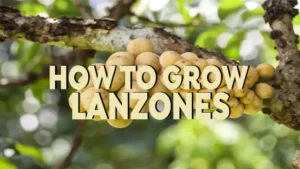
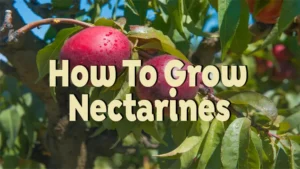
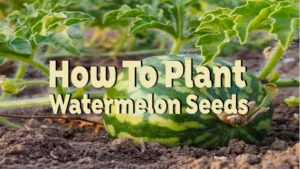

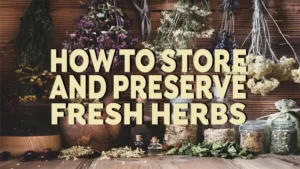


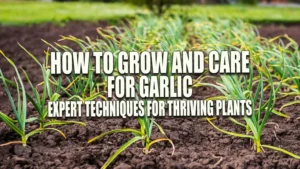




Leave your comment